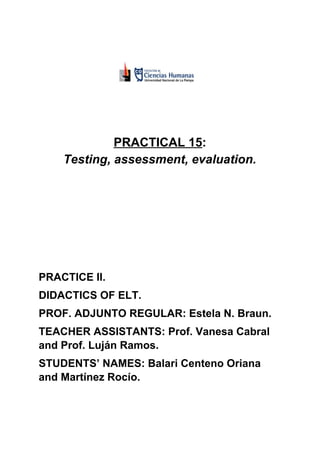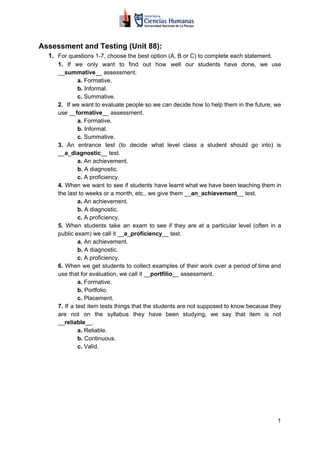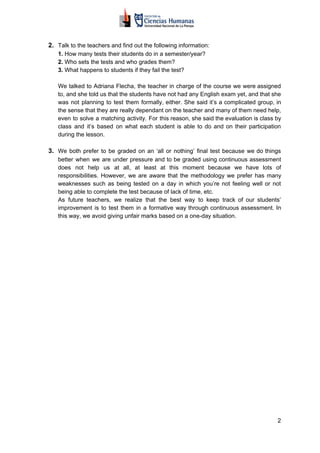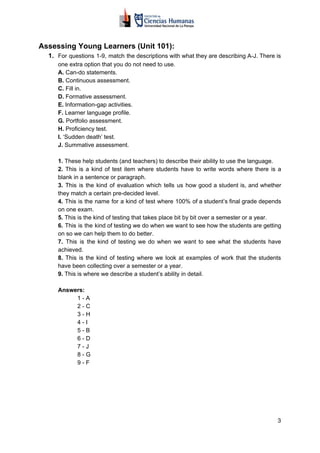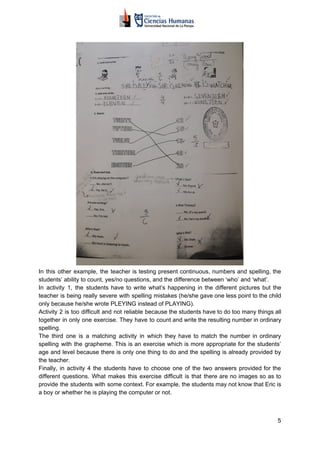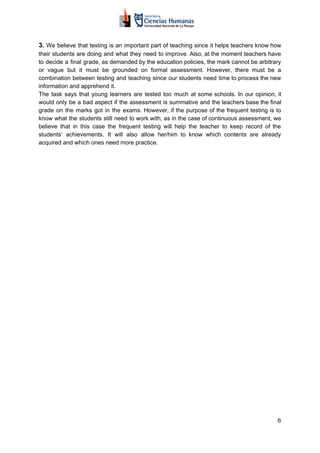This document contains an example of an assessment given to students, along with analysis and discussion of it. It includes:
1) A test assessing numbers, verbs, adjectives and short answers. The assistant provides analysis of exercises and whether they are appropriate for the students' level.
2) Another example test assessing present continuous, numbers, spelling, abilities. Again the assistant analyzes difficulties and appropriateness of exercises.
3) A discussion that testing is important for teacher feedback but too much summative testing bases grades on exams alone. Frequent formative testing through continuous assessment helps teachers track student progress.
